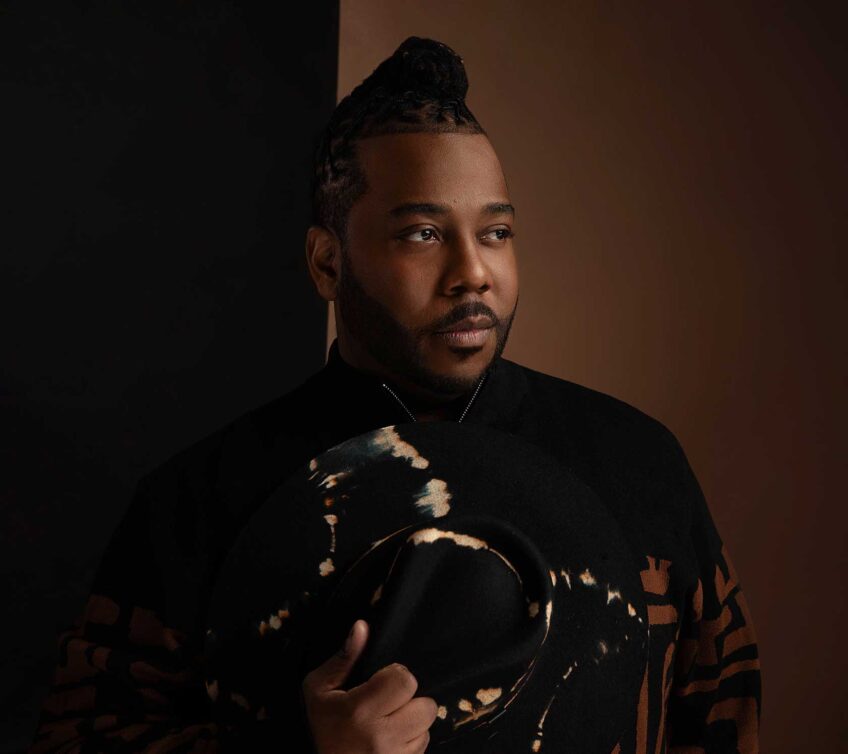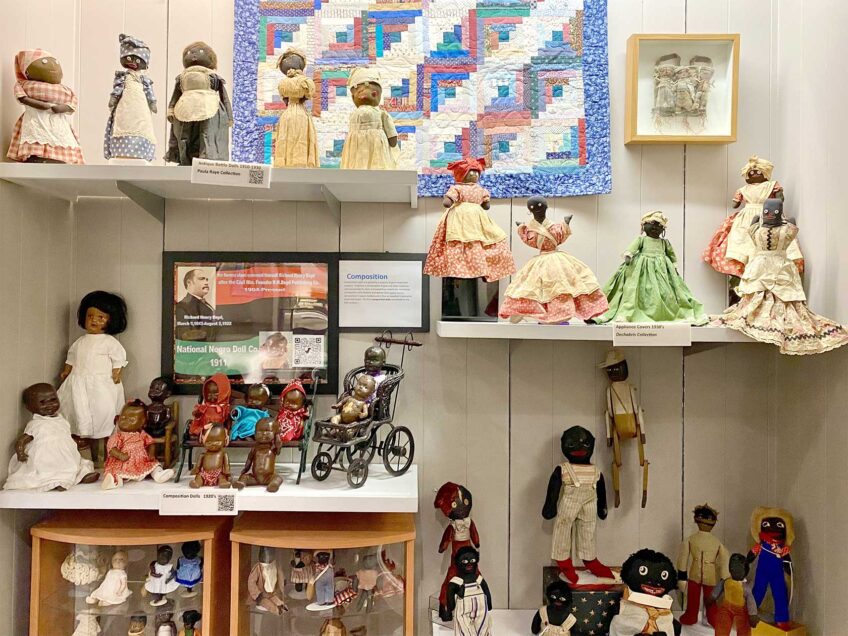Artist Steve Locke’s dual exhibit confronts racial, romantic history
Artist Steve Locke is not afraid of handling delicate subject matter. In fact, he relishes the opportunity to bring the dark secrets of human history to light. In his collaborative exhibitions “Family Pictures” at Gallery Kayafas and “The School of Love” at Samsøn, he confronts violence, racism, and identity with controlled expertise. He reminds Boston, an academically progressive but often tight-lipped city, that historical transgressions and personal violence do not rub off with warm water and a firm hand.
“Family Pictures” represents Locke’s first photographic portfolio, featuring a series of large scale prints depicting black and white photographs in decorative frames, sitting on a wooden end table. On closer inspection, the frames contain images of lynchings, mobs and racial violence from U.S. history. A white frame with “Our Honeymoon” written in script on the bottom holds a diagram of a slave ship’s cargo area. Two white flip-flops, cast into the top of the frame, sit heavily like the weights on a noose.
Picturing pain
Locke tells the untold stories. These photographs were taken from a collection of books about African American history, which are available in a reading room next to the exhibit for perusal. He plucks the most heart wrenching moments of violence and neglect from history and hangs them on the wall. In his artist statement, Locke discusses how this kind of treatment of black and poor people is becoming increasingly visible. Black men were always unfairly shot, but now we see it on the news. “Family Pictures” reminds viewers that this is not a new phenomenon; this is our collective cultural heritage.
Lynchings were considered a lurid source of entertainment for much of the 19th and, alarmingly, the 20th centuries. Nearly 3,500 African Americans were lynched in the United States between 1882 and 1968. Photographers would capture the event and then print postcards for attendees to send to their family and friends. Many of these are pictured in the reading room collection, some with the writing still on them. Locke plays on this dark, grotesque pit of human nature with frames that say things like “I can’t believe we did that” and “Wouldn’t you want to be us?” encasing photographs of innocent black men hanging from trees while the mob around them celebrates.
“The School of Love,” at Samsøn, reflects similar violent undertones but within sexual context. Locke is known for his portraits and has often been criticized for painting white people. Many of these portraits are prominently featured against one wall of the exhibit. A line of white men make lascivious, foolish faces with their tongues out and their features inflated. In fact, they mirror the offensive, exaggerated historical depictions of black men as foolish and frightening clowns.
Transcendence
Kitsch cast heads of a fawn hang in and around the portraits, bearing some resemblance to the artist. The heads are cast in Hydrocal and dyed a spectrum of bold, vivid colors. They hang from the ceiling, from the paintings and lay on the floor, creating a minefield of decapitation throughout the gallery. Some have nails penetrating the head and eyes, bungee cords and cotton rope bind. In many ways the sculptures seem to represent Locke — tied, bound and penetrated at the hands of the portraits that watch him from the wall.
Locke was inspired by, and takes the name from, Correggio’s portrait “The School of Love.” But his process of learning about love, sex and communication was much less delicate than Correggio’s cuddling angels. The titles of the works indicate this, “lessons from Occupied Japan,” and “for when he tells you, ‘I love your nigger cock.’” A piece tucked into the end of the gallery has a head suspended from a floating bookshelf stocked with titles like “Growing up Hard,” and “Uncle’s Plaything,” a textural memory of love’s lessons learned, whatever the damage.
In a society where racial injustice continues to exist, Locke plunges us head first into the abyss. He reminds the audience that for African Americans, violence, racism and assault are status quo. He reminds us that no matter how we dress our history up in whimsical frames or layers of dye, it is still comprised of hanging heads and swinging bodies.


![Banner [Virtual] Art Gallery](https://baystatebanner.com/wp-content/uploads/2024/04/Cagen-Luse_Men-at-store-e1713991226112-150x150.jpg)

![Banner [Virtual] Art Gallery](https://baystatebanner.com/wp-content/uploads/2024/04/Cagen-Luse_Men-at-store-e1713991226112-848x569.jpg)

